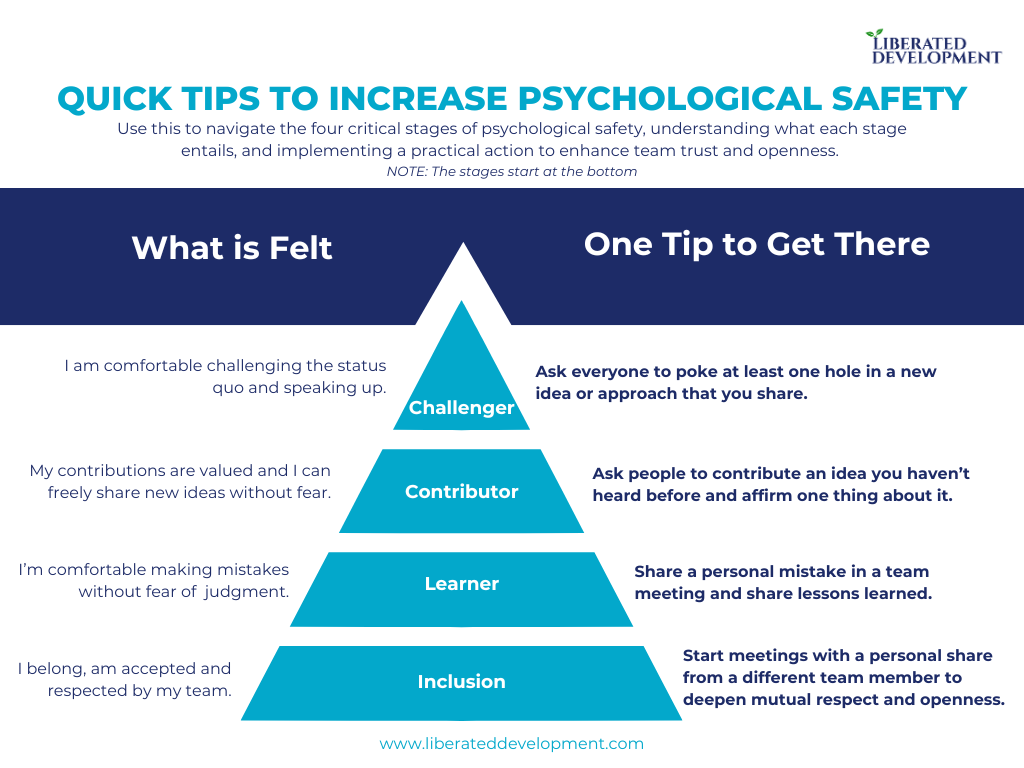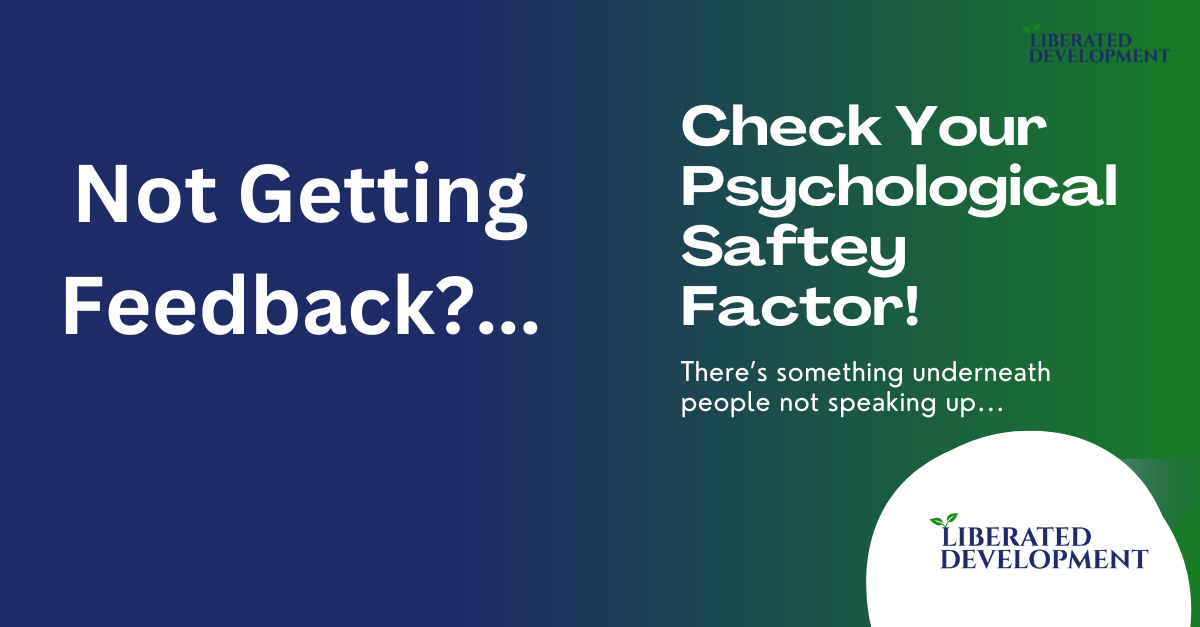Quick Tips to Cultivate Trust and Openness in Your Team
I’ve been in a lot of conversations lately with leaders who are frustrated by the lack of feedback within their team. It's a common issue in many organizations, but the root cause might not be what you think. Instead of a simple reluctance to speak up, the real barrier often lies in your team's psychological safety and an individual's inclination to protect their mental wellness. A lot of us are trying to work toward a “feedback culture” but this kind of culture doesn’t just happen - it’s built. And it’s built on psychological safety.
Understanding Psychological Safety
Psychological safety is crucial in modern workplaces, enabling team members to take interpersonal risks, like giving honest feedback, without fearing negative consequences to their image, status, or job security.
It’s said that there are four stages to true psychological safety. We are going to use this as the reference in this post.
Inclusion Safety: This stage is pretty basic. It satisfies the basic human need to connect and belong. It ensures that team members feel safe to be themselves without fear of exclusion or discrimination.
Learner Safety: This stage opens up growth and development on your team. At this level, individuals feel safe to engage in the learning process, ask questions, give and receive feedback, experiment, and make mistakes.
Contributor Safety: This is where new ideas, creative thinking and innovation take place.This stage enables team members to contribute actively and use their skills and abilities to their full potential. Individuals feel valued and believe their contributions make a difference.
Challenger Safety: This is where deep transformation and sustainable change takes place. It’s the highest level, where individuals feel safe to challenge the status quo without fear of reprisal or damaging their reputation or standing within their team.
Why Feedback Often Falls Short
In many organizations, the absence of feedback isn’t merely due to employees choosing not to speak up; it’s often because they do not feel safe doing so. Without psychological safety, employees might worry about being judged or facing repercussions for their honesty. This fear can stifle the very openness and transparency necessary for growth and improvement.
Taking Action
While cultivating this culture takes time, the tips provided on this page offer immediate actions to enhance psychological safety, based on its four stages.

To truly enhance psychological safety, try these simple (though maybe not "easy") actions. And where you feel hesitancy, get curious about your own psychological safety on your team. If you are reluctant to try any of this suggestions here, that may be an indication of what your team members are experiencing as well:
- Inclusion Safety Challenge: Start each meeting this month with a personal share from a different team member to deepen mutual respect and openness.
- Learner Safety Experiment: Share your own mistakes in team meetings to model acceptance of feedback and learning.
- Contributor Safety Task: Rotate meeting leadership to give everyone a chance to lead discussions and provide feedback.
- Challenger Safety Initiative: Introduce an 'Idea Box' where team members can anonymously submit ideas for improvement, which can be discussed in open sessions.
Why Prioritizing Psychological Safety Matters
Leaders play a crucial role in promoting psychological safety. By actively fostering an environment where feedback is encouraged and valued, you not only enhance team dynamics but also drive your organization towards greater innovation and efficiency.
Take a look at this resource to start building a workplace where feedback flows freely and every team member feels valued and heard. Implementing these strategies can significantly improve your team's engagement and productivity, creating a more inclusive and dynamic workplace.

